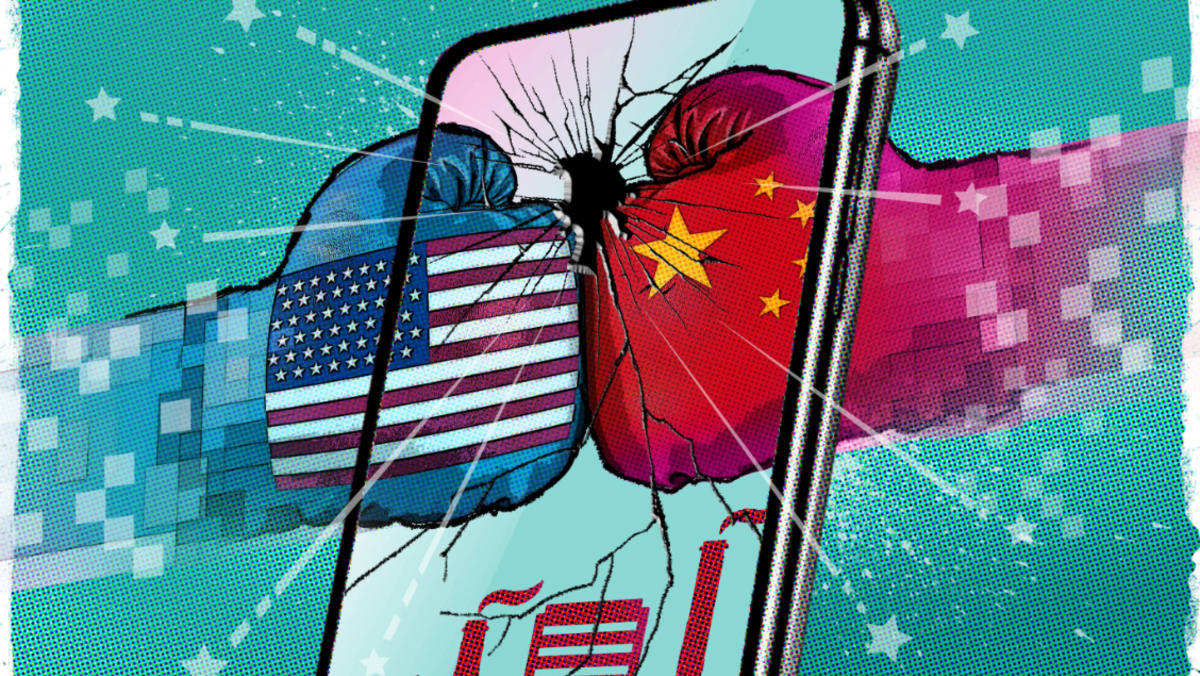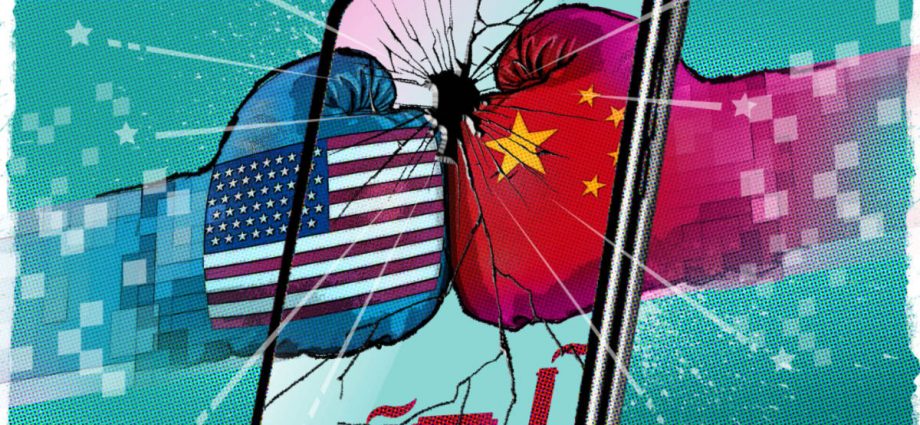
Once home to tens of thousands of electronics companies, Huaqiangbei saw annual turnover top 120 billion yuan (US$17.4 billion) at its peak, between 2009 and 2011, the Shenzhen Economic Daily reported.
In May 2010, monthly rental for a ground-floor shop in Huaqiangbei could cost more than 3,000 yuan per sq m – at a time when the city’s top luxury malls could only charge a few hundred yuan per square metre.
However, the counterfeit mobile phone business began declining in 2012 because MediaTek’s chips could not match the technical prowess of the latest generation of smartphones, like Apple’s iPhone and Samsung’s Galaxy.
“The chip, the core component of the latest generation of smartphones, became hard to copy, the copycat businesses just died away, as they could no longer replicate the high-end technology and sell it cheaply,” he said.
The global smartphone market has in recent years been marked by periods of turbulence, most notably due to a shortage of chips, which China must import to power its high-end handsets. There are also concerns that domestic component suppliers could lose orders with multinationals, who are looking to diversify away from China amid heightened geopolitical tensions between Beijing and Washington.
Chips have emerged as a key battleground in the US-China tech war, because they power everything from electric vehicles to space shuttles. The US is choking China’s access to both semiconductor chips and the equipment producing them, allying with the Netherlands, Japan, South Korea and Taiwan to restrict exports to the mainland.
Last year, Apple revealed its intention to move parts of its manufacturing process out of China and into emerging markets such as India and Vietnam after experiencing stringent COVID-19 curbs in mainland China.
Apple’s major contractor, Taiwan-based Foxconn, has recently announced plans to create a major new factory in Vietnam after investing US$500 million in its Indian subsidiary last year. Foxconn’s Zhengzhou factory in the central province of Henan is the world’s largest iPhone assembly site, hiring as many as 300,000 employees and accounting for 50 per cent to 60 per cent of Foxconn’s global iPhone assembly capacity.
Nevertheless, Tang remains optimistic.
“The shifting of the industrial chain overseas has not been as easy as imagined, and most of the deep-processed raw materials are re-exported from China,” Tang said.
“If the yield rate of high-end mobile phones produced in India and Vietnam is now about 50 or 60 per cent, it has to be increased by 200 per cent to approach the current yield rate of Chinese factories. This is a long process, which is why Apple is currently unable to leave China for the production of its latest iPhone series.”
Chinese companies with operations in India will still play a key role in Apple’s plan to make some iPhones in the country, The New York Times reported in September last year. In Chennai, India, subsidiaries of Chinese companies will supply chargers and other components for iPhones, the newspaper reported, citing people familiar with the situation.
Zeng Liaoyuan, an associate professor of information and communication engineering at the University of Electronic Science and Technology of China in Chengdu, said difficulties for Chinese manufacturers will soon arrive and last for at least two decades before China can successfully madek advanced chips on its own.
“There have been talks (among academics) about changing the arena of competition (with the US). In the manufacturing area, however, there’s no sector which can bypass chips,” Zeng said.
“Crucial to the colossal telecoms industries and digital economy, China cannot abandon the smartphone sector. Only by motivating scientists, researchers and engineers to make innovations, will China be able to grasp chip-making technologies.”
Chinese companies will face an “innovate or die” situation amid fierce competition in 5G generation, a spokesman from one Chinese firm under US sanctions told the Post. The company did not want to be identified due to the sensitivity of the matter.
The 5G network has been deployed around the world at an amazing speed and all Chinese enterprises should keep innovating and cultivating the soil for disruptive innovations, according to the company, adding it would continuously enable users to enjoy full-scenario digital experience centred on mobile phones among other terminals.
John Kou, a veteran electronic engineer in his early 50s in Shenzhen, said China’s whole electronics sector would suffer if foreign high-end smartphone makers continue to diversify.
“Brands like Apple have actually driven the upgrading of China’s electronics industry chain over the years,” he said. “They set high process requirements, whether it is electronic components or screen glass. To secure their orders, Chinese factories are incentivised to invest into upgrading their production lines and training the workforce.
“If the foreign brands relocate abroad, China’s domestic demand alone is not enough to generate support for R&D and production of the next generation of high-end electronic products.”
Liu Kaiming, head of the Institute of Contemporary Observation in Guangdong, attributed China’s rise as the world’s smartphone manufacturing hub to its complete supply chain, the existence of a large number of skilled workers and a huge domestic market.
“The maturity of the supply chain is the biggest advantage of Chinese mobile phone manufacturing, and leaving China to reset the supply chain is actually a huge cost increase for brands,” said Liu, whose institute has been supervising supply chains in hundreds of OEM companies in China for two decades.
However, geopolitical changes are affecting the economic dynamics. As mobile phones are crucial to the ecology of China’s electronics industry, China should try to minimise political differences and maintain friendly trade relations with most countries, Liu said.
“Southeast Asia is emerging as a new global manufacturing centre. China should use the established economic relationship with Southeast Asian countries to jointly build a supply chain with complementary advantages, synergistic efficiency, and mutual benefits,” he said.
As of today, 90 per cent of Apple’s latest iPhones shipments are still made in China, Liu said, adding whether it is India or Vietnam, there is still no capacity for mass production of new iPhones elsewhere.
But that could all change in three years’ time, with maybe 30 per cent of such production shifted from China, he said.
This article was first published on SCMP.

